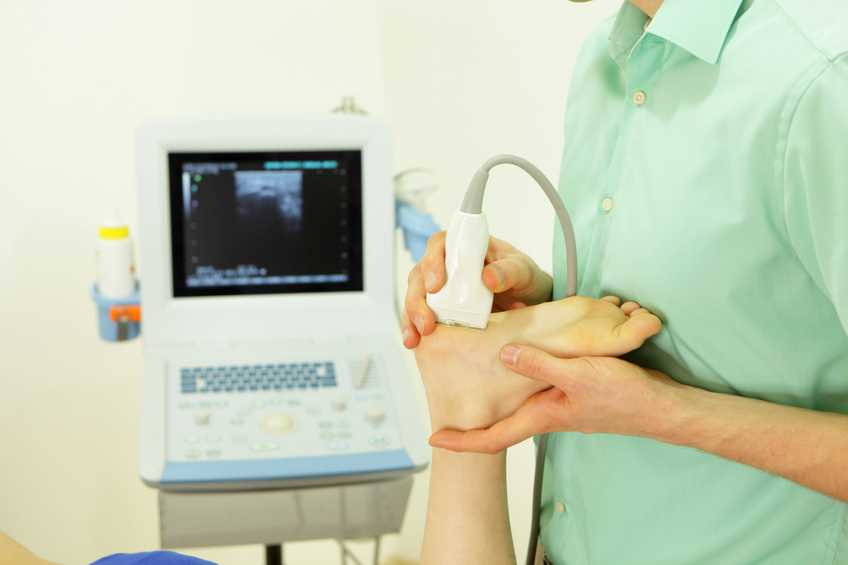Local pharmacies are offering many services older adults can benefit from without making a regular doctor’s appointment including vaccinations, travel immunizations, wellness visits, quit smoking consultations, health screenings and treatment for minor illness and injury. In some locations, clients can also have a screening which measures bone density.
A common test for bone weakening is the Bone Mineral Density (BMD) test that uses a very low radiation exposure x-ray test to detect the density of bone, usually done at the heel or on the finger. Test results are scored compared with an average young adult; a T-score between 1 and 2.5 standard deviations indicates low bone density and a result below 2.5 SD is indicative of osteoporosis, according to the World Health Organization.
Ultrasound machines have recently become a popular and inexpensive screening tool for osteoporosis, commonly used at health fairs and drug stores but according to American Bone Health, they are not a reliable test and do not accurately measure density. The National Osteoporosis Foundation stands behind x-ray based bone density testing as the best predictor of the risk of hip fracture and bone loss.
It is recommended that women older than 65 or those over 60 with an increased risk of osteoporosis be tested. Low bone density affects mostly older people over the age of 50 and an estimated 10 million people in the United States have been diagnosed with osteoporosis, a condition resulting from very low bone density causing bone tissue to weaken and fracture easily.
Although bone weakening affects half of all women and one in four men, it can be prevented or at least delayed with dietary changes, calcium and vitamin D supplements, daily weight-bearing exercises, smoking cessation and reducing alcohol consumption. Limited exposure to sunlight, a natural source of vitamin D, can also help prevent bone loss.
If you have taken corticosteroid medication every day for more than three months, have had an early menopause or suffer from rheumatoid arthritis, chronic kidney disease or eating disorders, you may also be at greater risk for osteoporosis.
Treatment for low bone density may include drug treatment options as well as recommended calcium and vitamin D intake along with a healthy diet. The Canada Food Guide recommends three servings of milk or milk alternatives each day totaling 1200 mg of calcium. Although we get vitamin D naturally from the sun, some climates make getting sufficient vitamin D difficult. Adults over the age of 50 at high risk for osteoporosis should get 800-1200 IU of vitamin D. Higher amounts can be unsafe and should only be taken under the supervision of a doctor.
Before taking any supplement or making any changes to your diet, consult with your doctor. To learn more about osteoporosis and bone loss, visit Osteoporosis Canada at www.osteoporosis.ca .






Add Your Voice
0 Comments
Join the Discussion